Artist Rachel Sussman is obsessed with very old things that are still alive. No, not certain members of the British aristocracy. Things like the Pafuri baobab, a South African tree that is likely at least 2,000 years old — and requires an armed guard escort to visit. Or the stromatolites of Western Australia, organisms connected to the oxygenation of the planet that began some 3.5 billion years ago.
Sussman has spent years researching the science behind each shot, tracking down researchers to find out what they know — and then figuring out exactly where she needs to head next. “I try to approach them as portraits,” she says of her images. “I want to differentiate them from landscapes or straight documentary; these organisms have so much character and in some way they are all individuals.” In these often quiet, calm images, it’s the story beneath the surface that counts.
Many of the images are contained in her book, The Oldest Living Things in the World, in which she offers a crisp snapshot of a world that has lasted for millennia — sometimes against all of humanity’s best efforts. Here, take a look at some of the photographs. At the bottom, see the TED Talk she gave on her quest back in 2010.
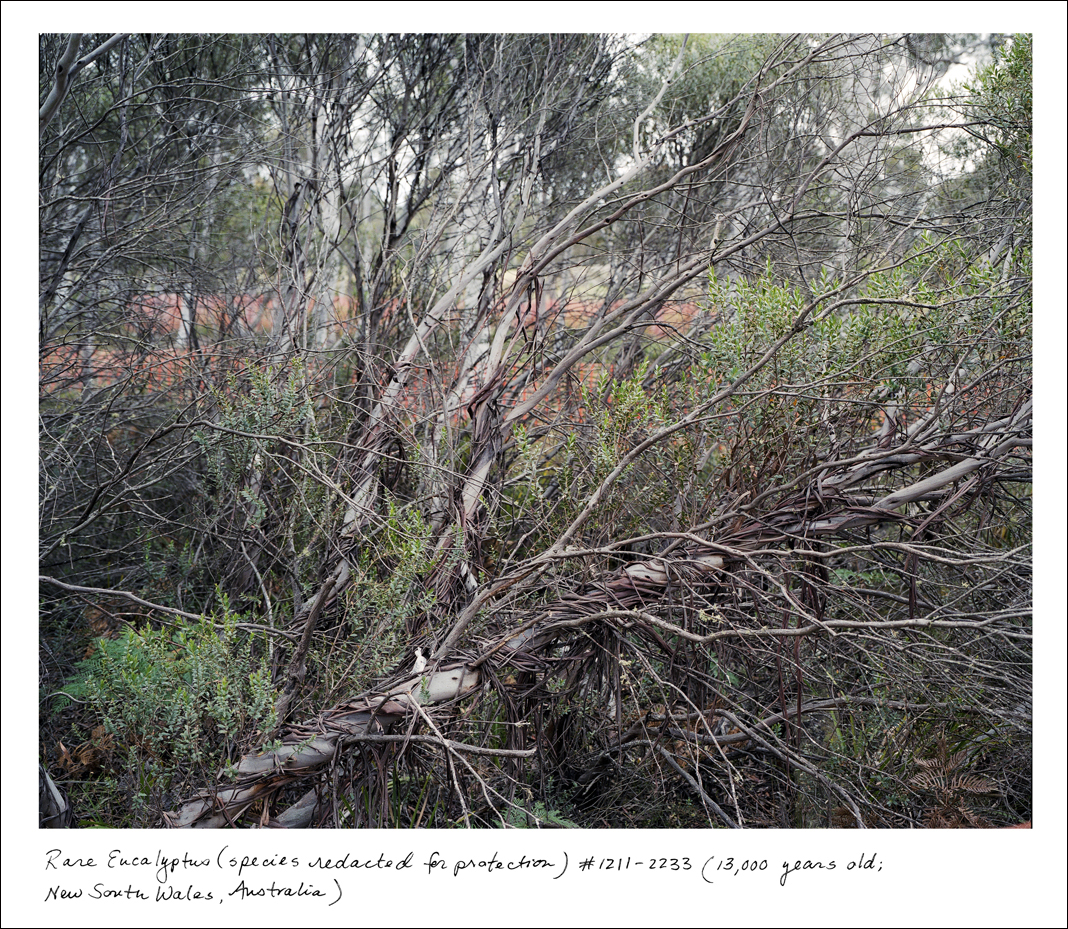
Rare Eucalyptus, New South Wales, Australia, 13,000 years old
This critically endangered eucalyptus is one of fewer than five of its kind left on the planet. Sussman had to promise its keepers that she would not share its name so as to keep its location secret.
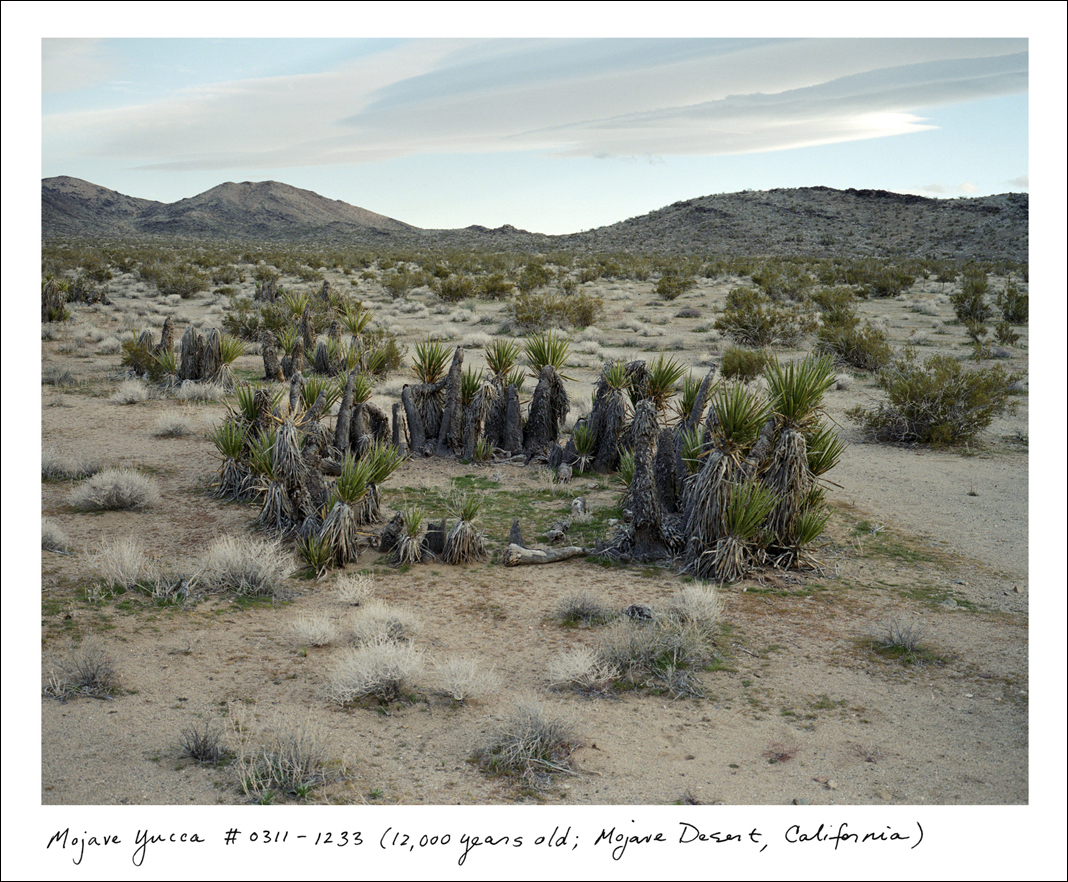
Mojave Yucca, Mojave Desert, California, 12,000 years old
“The approximately 12,000-year-old creosote bush and Mojave yucca both have remarkable circular structures, pushing slowly outward from a central originating stem,” says Sussman. “New stems replace old ones, but they are all connected by the same clonal root structure.”
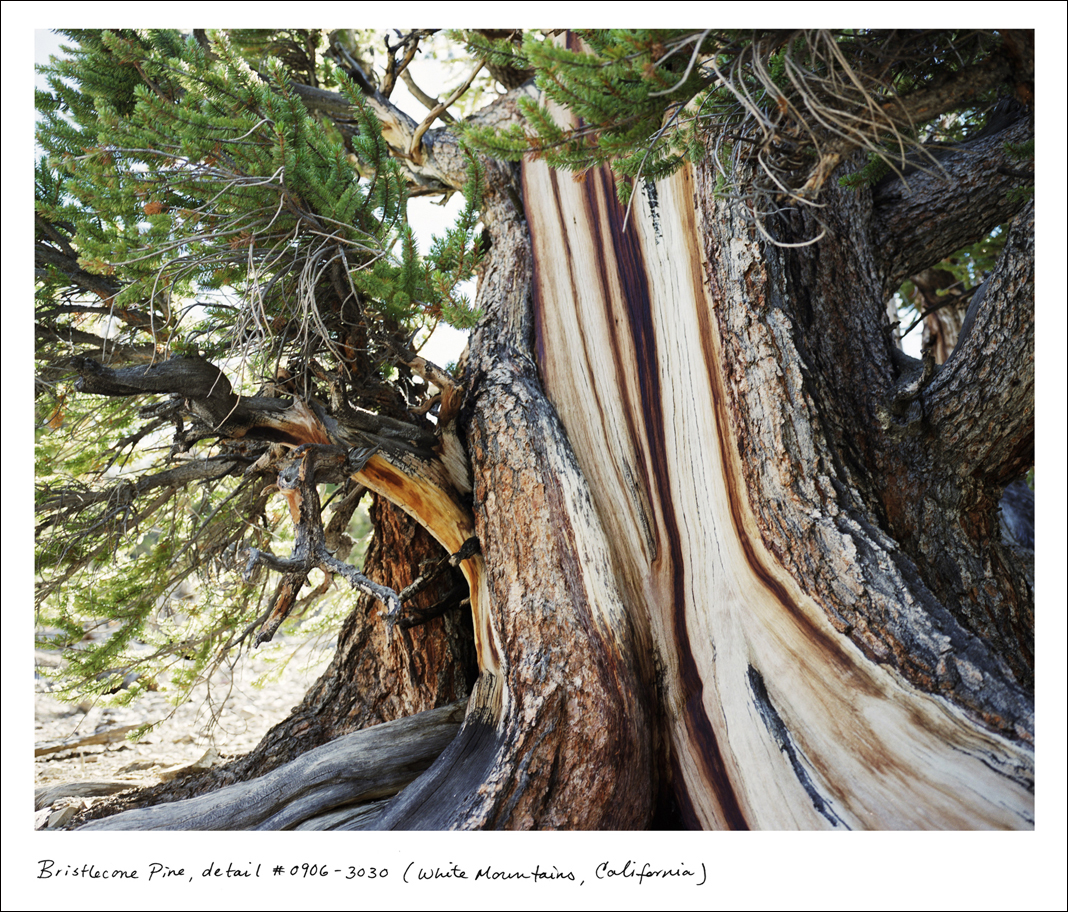
Bristlecone Pine, White Mountains, California
“Bristlecone pines are the oldest unitary organisms in the world, known to surpass 5,000 years in age,” says Sussman. “In the 1960’s a then-grad student cut down what would have been the oldest known tree in the world while retrieving a lost coring bit. A cross section of that tree was placed in a Nevada casino.”
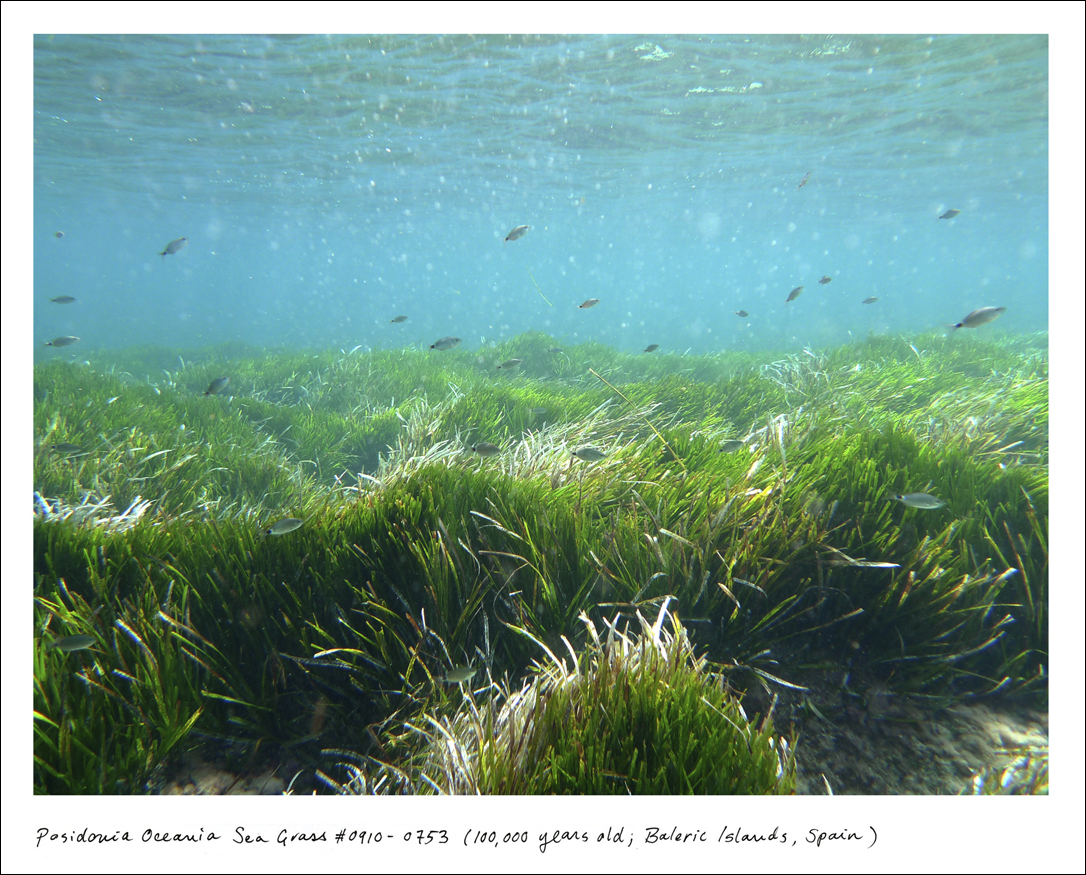
Posidonia Oceania Sea Grass, Balearic Islands, Spain, 100,000 years old
“The Posidonia sea grass meadow was first taking root at the same time some of our earliest ancestors were creating the first known ‘art studio’ in South Africa,” says Sussman. “It lives in the UNESCO-protected waterway between the islands of Ibiza and Formentera.”
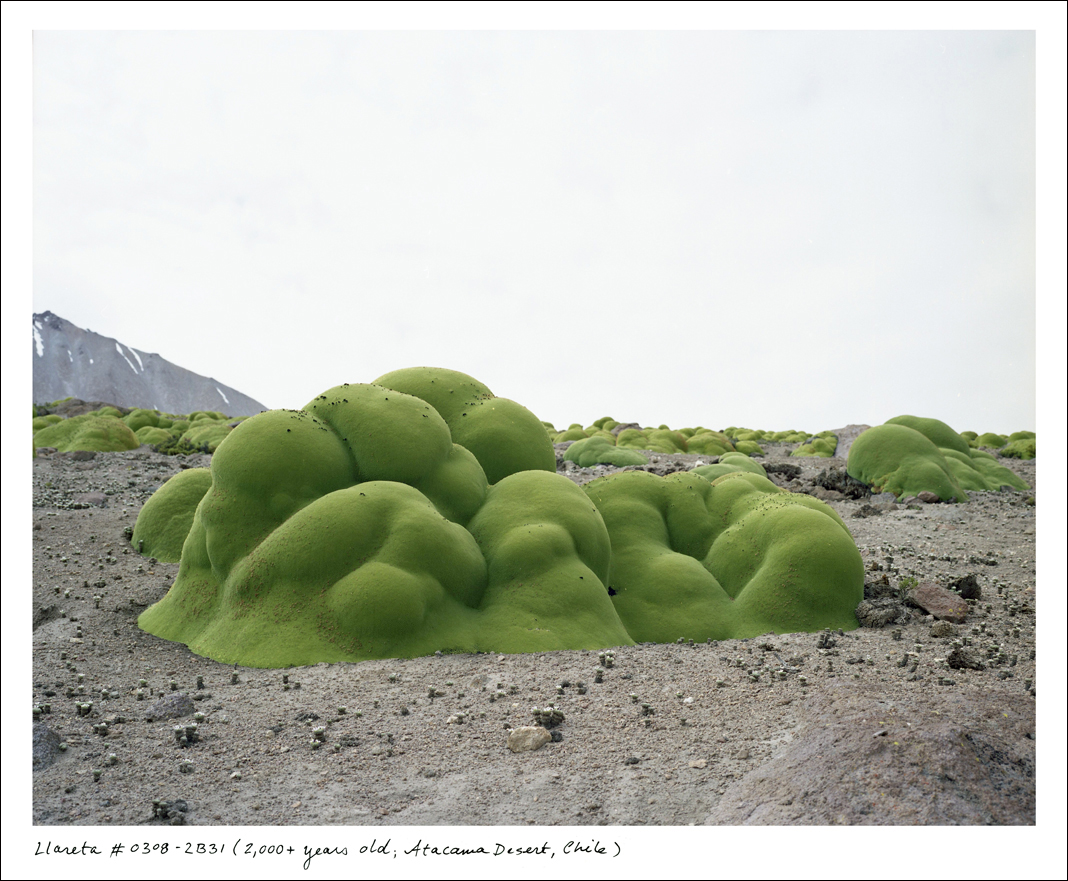
La Llareta, Atacama Desert, Chile, 2,000+ years old
“What looks like moss covering rocks is actually a very dense, flowering shrub that happens to be a relative of parsley,” says Sussman.
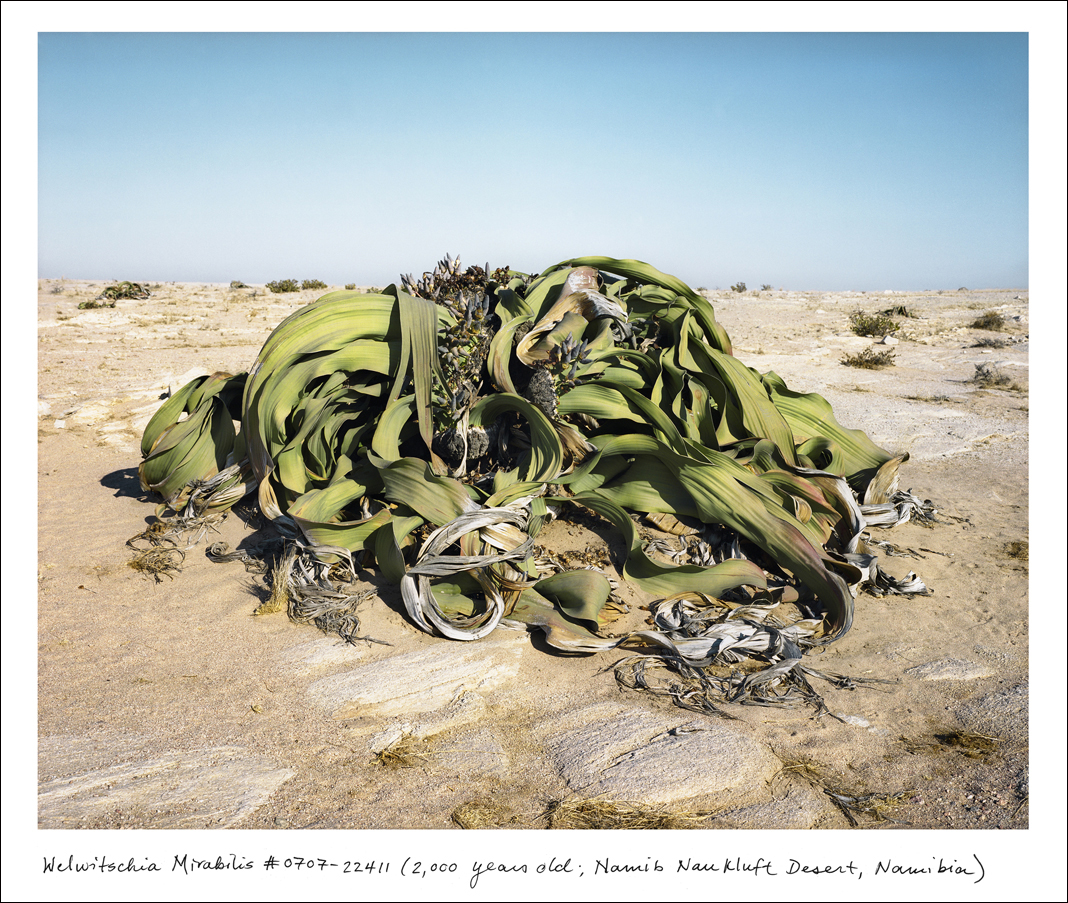
Welwitschia Mirabilis, Namib-Naukluft Desert, Namibia, 2,000 years old
The Welwistchia is a primitive conifer living only in parts of coastal Namibia and Angola. “Despite appearances, it only has two single leaves, which it never sheds,” says Sussman.
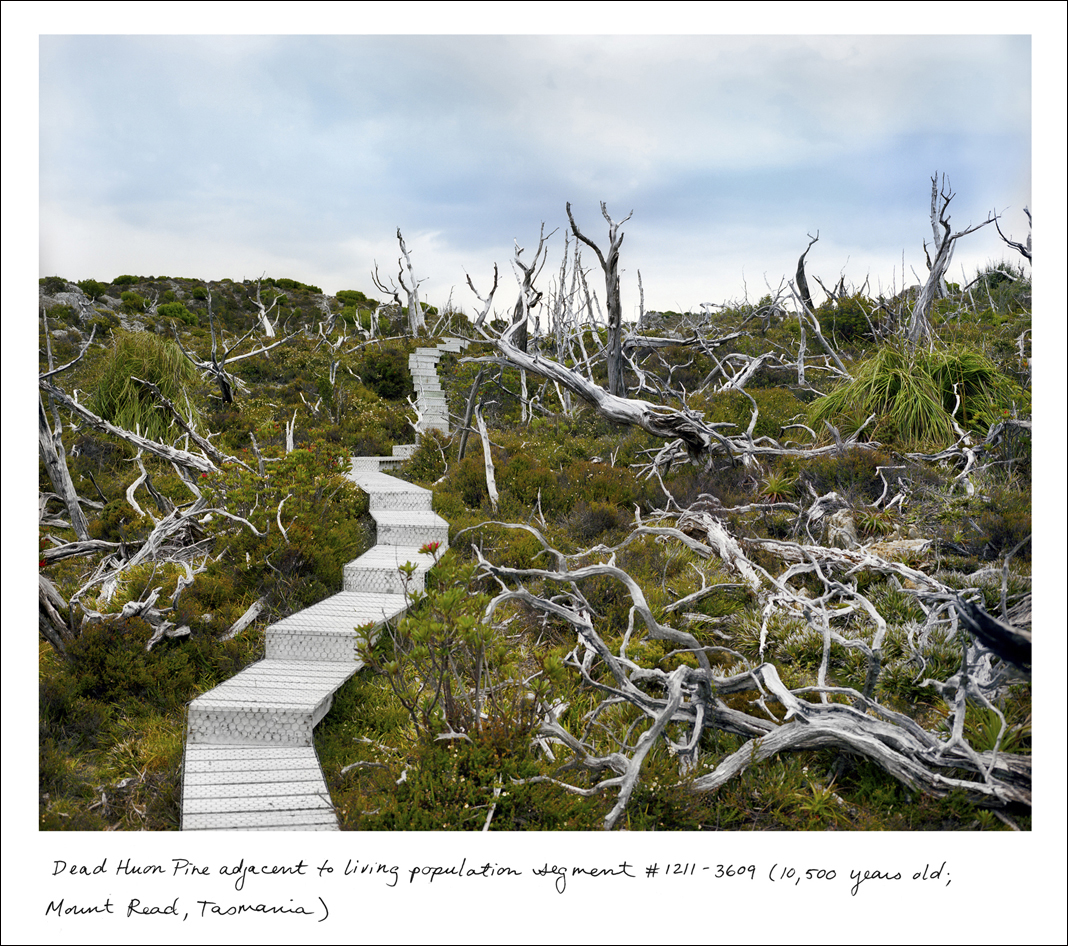
Dead Huon Pine adjacent to living population segment, Mount Read, Tasmania, 10,500 years old
The age of this colony was discovered by carbon dating ancient pollen found at the bottom of a nearby lakebed, says Sussman.
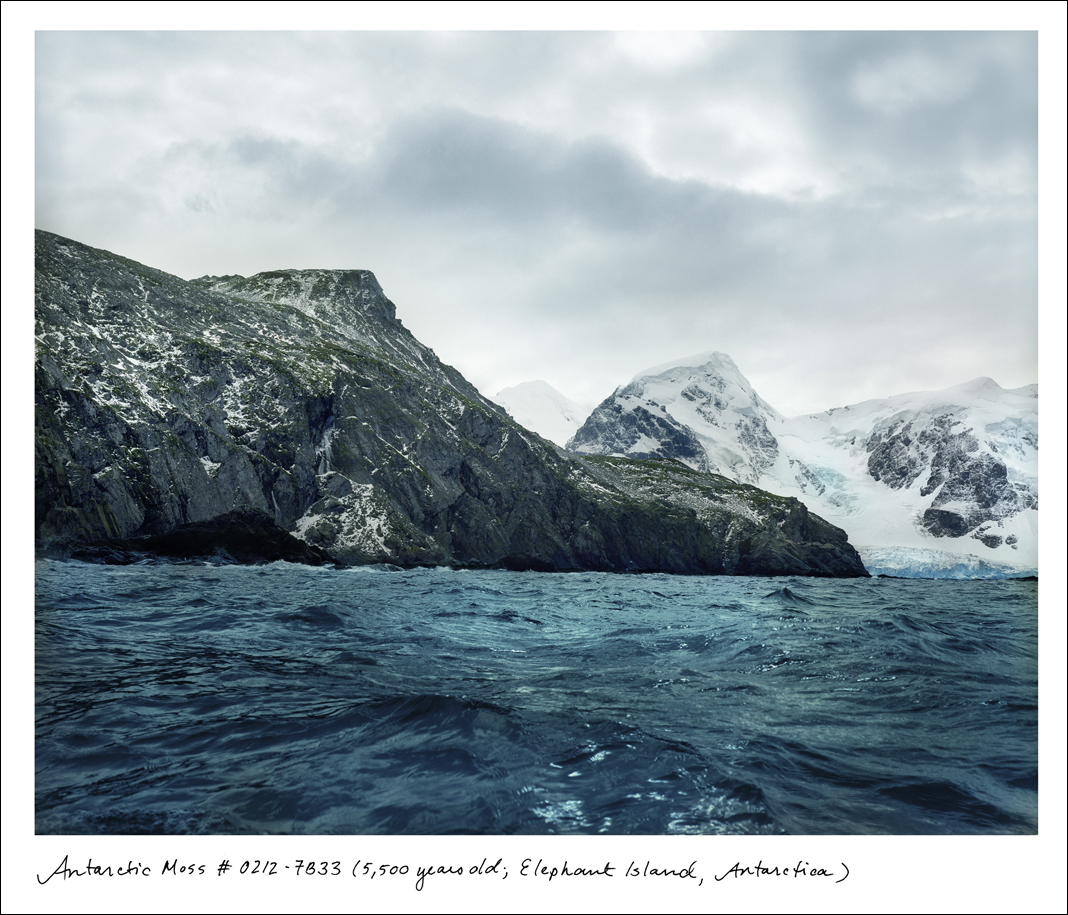
Antarctic Moss, Elephant Island, Antarctica, 5,500 years old
“This moss bank lives right around the corner from where the Shackleton Expedition was marooned 100 years ago,” says Sussman. Getting there was no easy matter. “It was a victory simply being able to locate it.”
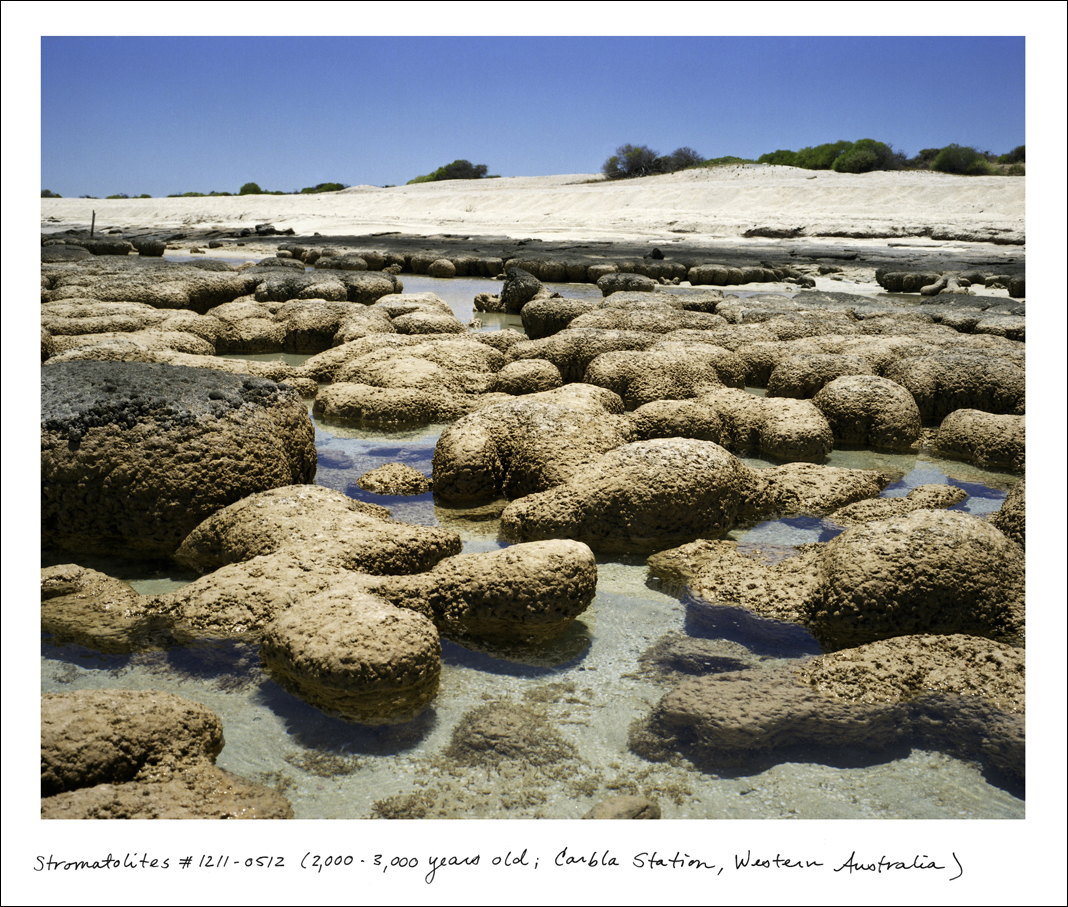
Stromatolites, Carbla Station, Western Australia, 2,000 – 3,000 years old
“Stromatolites are bound cyanobacteria; organisms that are tied to the oxygenation of the planet that began 3.5 billion years ago, setting the stage for the rest of all life on Earth,” says Sussman.
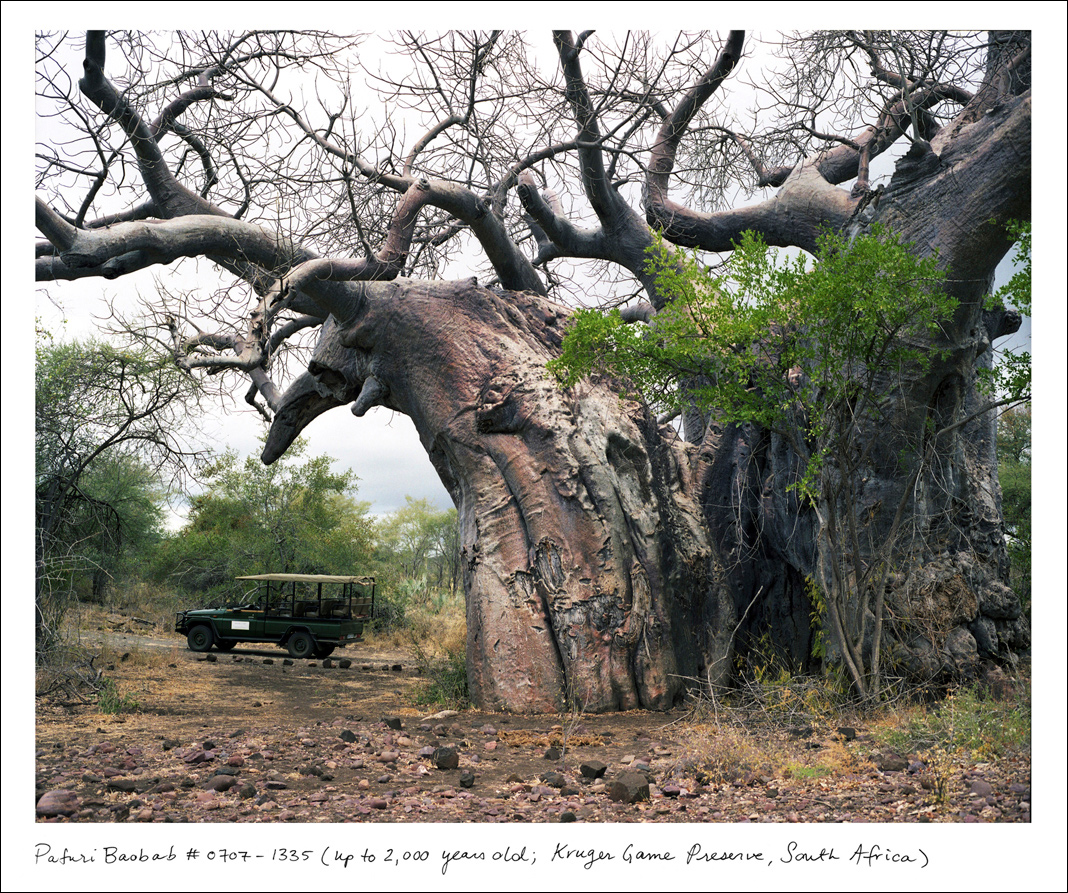
Pafuri Baobab, Kruger National Park, South Africa, up to 2,000 years old
This particular baobab tree requires an armed escort to visit. Says Sussman, “Baobabs get pulpy at their centers and tend to hollow out as they grow older. These hollows can serve as natural shelters for animals, but have also been appropriated for some less scrupulous human uses: for instance, as a toilet, a prison, and a bar.”
[ted id=948]
Photos courtesy of Rachel Sussman.














